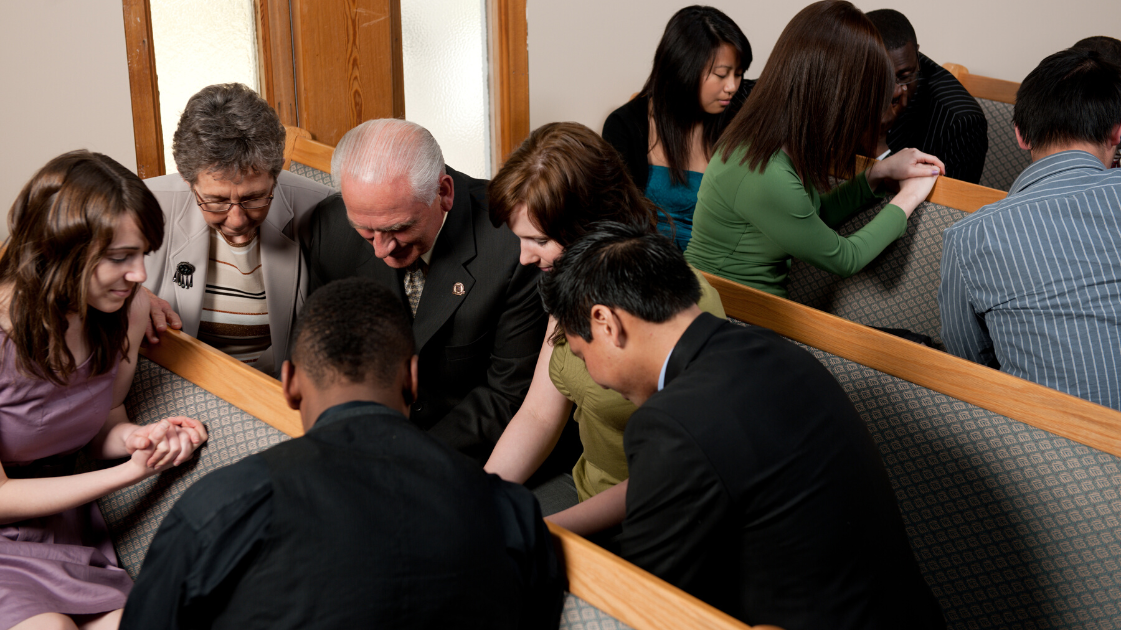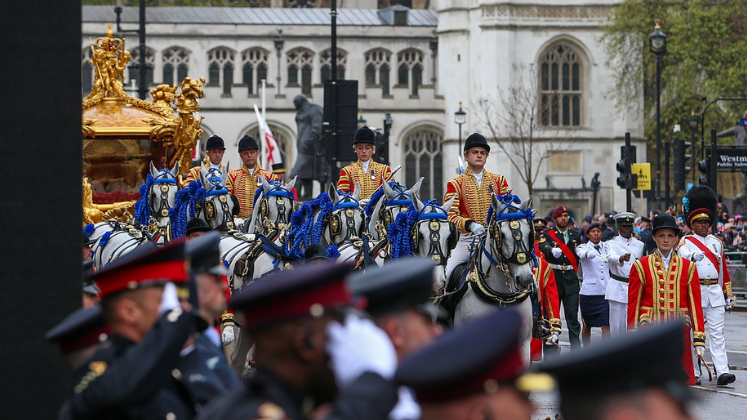During the British rule in India, an economy of performance was intricately tied to the circulation of culture, language, and spirituality. Here, Nihira looks at how the spread of religious practice was interwoven with women’s performances.
While researching for an article, I stumbled on an archival document dated 1938 regarding a secular fair that took place annually in Sarola Kasar, a village in western British India. Meant to memorialise Nirgunshah Auliya (Nirgun Shah Wali), most likely a Sufi Muslim ascetic who had moved to the region during the Mughal era.
The authors of the document, British administrative officials, note that the event featured a band of musicians and theatre troupes. The performers make appearances in details about religious fairs and marital ceremonies. They also are listed in a subheading ‘Village vices and failings’ under the section ‘Evils detrimental to rural life’. This dual social function, one being critical to the circulation of faith and the other as a cautionary tale about moral failure, was not unique to the British era – but was certainly exacerbated by it. These ‘evils’ continued in shifting and, perhaps, diminishing ways. But they continued, nonetheless. ‘Classical’ and ‘folk’ dances like the Kuchipudi, Theyyam, Dasi Attam, Bagurumba, and countless others exist even today in varying forms across South Asia. This piece sheds light on the conditions of professional women performers, in particular, in religious traditions in northern British India.
The world of performance functioned through complex hierarchies in colonial India. Courtesans with influence over and proximity to the royal courts and other institutions were positioned higher. Women encompassing the terrains of song and dance were placed in hierarchies depending on their caste backgrounds. Various regional and local terms existed to more clearly classify their roles. Here, we will not look at women attached in some way to religious institutions such as temples or others. Instead, we look at the more floating groups of women engaged in performance.
Much has been written about women performers, including their living conditions and compensations. From being paid in cash and salt as historian and scholar Katherine Schofield has unraveled, to being given tenuous assets like homes or jewelry from their patrons or admirers, women were compensated in diverse ways for their public and private performances. But what was the economy of religious performances? How is faith navigated when dealing in performance, that too of a kind that was ‘degrading’ in the eyes of many?
Between the 1910s and ‘20s, writer and historian Abdul Halim Sharar penned a collection of essays on the social and cultural history of Lucknow. Situated in northern India, Lucknow has been witness to culture renaissance and imperial rulers alike. During the month of Muharram, marked by Shia Muslims to mourn and remember the martyrdom of Imam Ali and his family, “thousands” used to arrive in Lucknow “and sat hopefully in [a religious congregation hall] waiting for the courtesan Lady Haidar to commence her song of lamentation”. Courtesans held a complicated position in the public and private spheres of life in the city. Depending on the wealth they managed to accumulate and the level of their personal intimacy (sexual and otherwise) with those in power, they were considered the propagators of creative practices.¹ Sharar even says (disapprovingly) that in Lucknow the publicly espoused sentiment of the nobility was “that until a person had association with courtesans he was not a polished man”.
On the singing and chanting of laments and dirges Sharar notes,
“The truth is that nothing produced so great an effect on the women of Lucknow, and on their men, as the chanting of dirges. […] One can take pride in the fact that although this chanting spread among the masses and illiterate people. […] Although the ordinary Shia considers soz khwam the road to salvation, their religious leaders have not yet sanctioned it in view of the Mushm religious law.”
What we learn from this is not only that music was inextricable from religious practice, but also that there was a mass circulation of religious music disavowed by leaders of the faith. Performers like Lady Haidar can, then, be described as critical to this circulation. ²
At another point Sharar mentions a “Chaudhrayan Haidar Jan” (possibly the same as Lady Haidar) whose house, like many wealthier courtesans, had become equivalent to France’s salons. A ‘Chaudhrayan’ (chief courtesan) performed several functions. According to scholar Veena Oldenburg, the head courtesan “[recruited] budding young singers, dancers, and musicians” who lived in her establishment. These establishments, like salons, became home to creative individuals and innovative artistic endeavours. The Chaudhrayan managed financial and logistical arrangements. Arrangements that were capital intensive.
Oldenburg mentions a 1862 letter to the editor of the newspaper Oudh Akbar who claimed (again, disapprovingly) that tawa’ifs (courtesans) “insisted on a hundred rupees a night and also received lavish gifts of jewelry and property”.
It is harder to ascertain the accuracy of these claims across the board. There is a tendency to universalise the accounts of richer courtesans to all women engaged in professional performance; performance that may or may not include sex work depending on the context.
Flemish artist Frans Balthazar Solvyns painted an almost demographic collection of works while living in British India. His 1810 representation of a nautch in Bengal has been repopularised in the art world recently. The accompanying text notes that for “great festivals, such as the marriage of a rich person, or a [Durga Puja- a religious celebration], twenty or thirty of these dancing girls, and from thirty to fifty musicians are hired”. He identifies the dancing girls as Ramjanis – women he claims “employed in the Hindoo temples and at all festivals in honour of their numerous deities”. Solvyns repeats the denigrating tone of British officials at the Nirgunshah Auliya fair by saying that religious dances were “corrupted” by public dancers who performed “obscene actions and attitudes”. But he separates them from an earlier group of “accomplished Ramjanis”. In the 1891 census of the Bengal Presidency conducted by the colonial administration, Ramjanis are listed as ‘Prostitutes’. Solvyns too maintains that in his time feasts relied on “women, who are generally prostitutes, [who] are hired for money”. Whether the British administration’s systematic gutting in the 19th century of women performers contributed to Ramjanis being included into sex work in actuality or only in perception remains a question. It is also possible that Solvyns projected his own misogyny onto earlier forms of the group and that sexual practice had been part of the Ramjanis’ work even prior to the nautches he witnessed. The survey officials’ and Solvyns’ categorisation of women performers may also have not considered that faith could look different in different contexts.
My examples are not intended to suggest that there was no relationship between singers with the tenets or practice of faiths different from their own. This beautiful article about the personal and musical history of Hindustani vocalist Naina Devi brings together the inseparable nature of performers with varying backgrounds. Whether its Naina Devi borrowing her name from a Muslim tawa’if who sang the Hindu hymn “Hey Gopal” in Banaras (present day city in the northern Indian state Uttar Pradesh) or the famous legacies of Hindu Sufis in 18th century Sindh (in present day Pakistan).³ These examples of religious performance moving into rather than away from one another was perhaps far more important to the permeability of organised religion into local traditions of faiths than the present nation states within South Asia would want to admit. This demands research on my behalf which I hope to undertake in the future.
A seemingly Hindu group of women dancers crops up again in a series by Sophie Charlotte Belnos. Born and raised in Calcutta (in the Bengal Presidency), Belnos echoes Solvyns about the presence of Hindu performers in Durga Puja celebrations. She also remarks that during the performances she was witness to the dancers incorporate rituals of pause and pay, wherein they “venture to approach while dancing some ladies of rank, and kneeling at their feet, continues singing, and at intervals softly asks for a Buxees [baksheesh – gift]: the ladies generally give a few rupees, on which she retires satisfied, to the other end of the saloon and continues her nautch”. Artist and writer Donovan Roebert in analysing Belnos’ work makes an interesting connection about the financial aspect of performers. Belnos’ painting of young dancing boys claims that they are “not so expensive as a set of Hindoostanee dancing girls”. I should note, though, that the context of the nautches Belnos was attending was one of wealth and patronage – the zamindars (landowners). The income of nautch dancers at the public fair in Sarola Kasar would have been different from that of those performing at the homes of the rich.
We get a glimpse of such differential positions through archival documents; even though the lives of women lower in the hierarchy were not considered important enough to remember. For example, the normative image of dancing girls is one adorned with jewelry, groomed elegantly, and donning beautiful clothes like some of these. But here is an image of a ‘Gypsy dancing girl’ in Kathiawar (today, western India) from the 1880s. A lack of shoes, torn clothes, and the placing of the young girl in a seemingly hut-lined path clarify her economic status compared to others higher up on the ladder. This isn’t to say that visual cues should assure us of the exact financial conditions of women. Rather, they can suggest directions to our understanding of how different girls and women experienced the empire.
We know from the British survey mentioned at the beginning of this essay, that in 1936, a band of musicians and tamasha shows were paid Rs 19 and Rs 10 respectively for their presence at the Nirgunshah Auliya fair. For comparison, three confectioners at the fair who “seemed to be doing very well” earned approximately Rs 100 to 150 cumulatively, while bangle sellers earned an estimated Rs 5 to 10. Officials added a disclaimer to this compensation stating that “[as] the year 1936 was not a good one [for residents who raised money through subscriptions to organise the fair], the rates were lowered [for all expenditures].” It’s possible this downfall is related to the wider economic depression that seized colonies in the 1930s. One could presume then that payments for performers in ‘good’ years could be slightly higher. And that for the dancing girls in Bengali mansions, remunerations would be higher still. Regardless of the terms of compensation, these descriptions make it clear that performers were, without a doubt, part of the economy of religion. There was compensation for creative religious labour, and considerations and measures made in order to arrive at them.
This brings us to a critical juncture that requires further research. If the hierarchy of a ‘head’ that Oldenburg mentions is taken as being consistent across the majority of travelling performer troupes, did performers actually receive their due compensation provided at the time of ‘hiring’? How was this compensation distributed? Is there a possibility that the ritual of collecting baksheesh during performances was a way for women to ensure they can pocket at least some income solely for themselves? Even for communities that did not follow patterns of a ‘head’, who were responsible for handling the ‘gifts’ – and how was that process carried out?
We know that women played an integral role in the circulation of religious narratives in the subcontinent, and that their suspected or actual engagement with sex work, among other things, became a continuous source of tension. But their reality as individuals trying to survive in feudal and capitalist structures – much like farmers or manual labourers, is an area yet to be intensively researched. ‘Mendicants’ formed another possible population of itinerant women who performed religious and/or spiritual renderings. Their realities have historically not received just attention. Initial readings show they survived on little, were moved by devotion, and targeted by a carceral society. Just one report from the same year as the Census that listed Ramjanis as prostitutes shows that women mendicants and beggars formed the biggest group of women inmates in Bombay Presidency’s government-operated lunatic asylums. Their reach into audiences that composed the ‘masses’ of the subcontinent made them purveyors of spiritual knowledge and dangerous deviants at the same time. What exactly would their sources and levels of income be? There has been some research of their reliance on floating residential spaces run by women which, again, were targeted as ‘breeding grounds of immorality’, but this, along with the fullness of their lives, too should be given more focus.
Women performers’ realities are tied to a wide set of social and economic phenomena, including caste (their own and that of their clientele), location, patronage, and others. Their practice of creative pursuits should not delude us into invisibilising their material conditions. In fact, one can only fully understand either by historically assessing both with equal importance. Precise and extensive research can build our understanding of how faith and women travelled together in colonial South Asia in contradicting and conflicting ways.
¹ An interesting point is to be made here by elucidating on Mubarak Begum, a courtesan and intimate partner of David Ochterlony, early British resident to the Mughal court. During the early 19th century, a mosque was built either by Begum herself or by Ochterlony in her honour. Over time, the site gained a second name – Randi ki Masjid (The Prostitute’s Mosque). While the details of her own life remain uncertain, ‘randi’ comes up as a caste listed in the British censuses carried out in the subcontinent. In Gwalior’s (central India, now) census of 1901 ‘Tawaif or randi’ is listed as a subcaste of Muslim singers and dancers. The same goes for the Jaipur census of 1924. The North-Western provinces census (which includes Jaipur) taken over half a century prior states that “randi, ‘a woman,’ has become a term of reproach for a woman of bad character”. It’s possible that the word originally was a reference only to women from a specific lower-caste community. According to a 1916 report, Chamar communities in the central eastern region who were historically tanners and menial labourers and placed lower in the caste regime, used the word ‘randi’ for widows. Numerous factors, including these, could have lent the rise of the term as a pejorative for women involved with sex work – or women diverging from societal norms. Much like the word ‘Chamar’ now is used as a casteist slur, ‘randi’ too could have seen such a transformation despite some associated with the term like Mubarak Begum gaining the ability to commission or inherit buildings (a religious one at that). This also shows us that women performers had to navigate their own relationship to faith and power and did so in fascinating ways.
² Plate 14.18. A possible portrait of Lady Haidar. She may also have been the same as ‘Chunawali Haidar’ who possessed a ‘melodious voice’. ‘Chunawali’ was a term for women from possibly a caste burning or dealing in lime mortar who took up singing and dancing professionally.
³ Michel Boivin’s work on Hindu Sufis and shrine culture in Sindh pokes through facades of ‘religious purity’ to reach the heart of faith’s volatile and ever-evolving reality.






